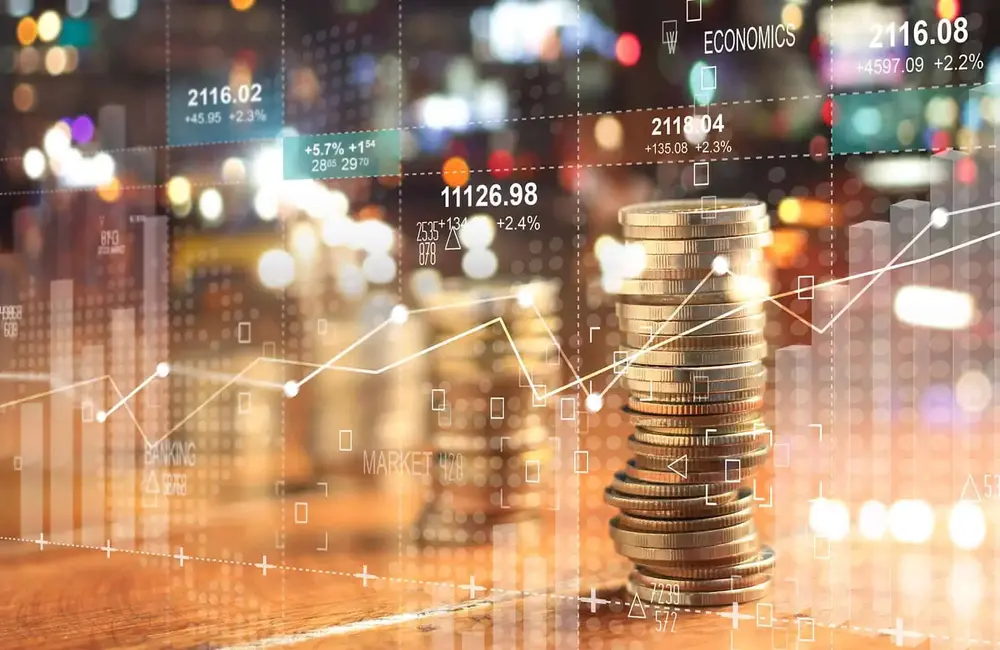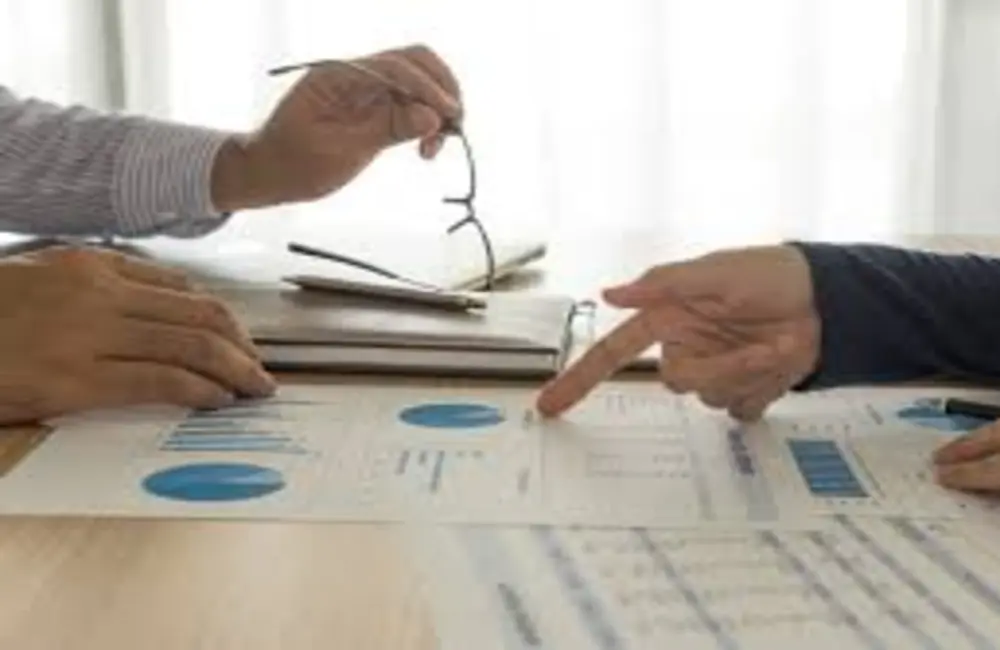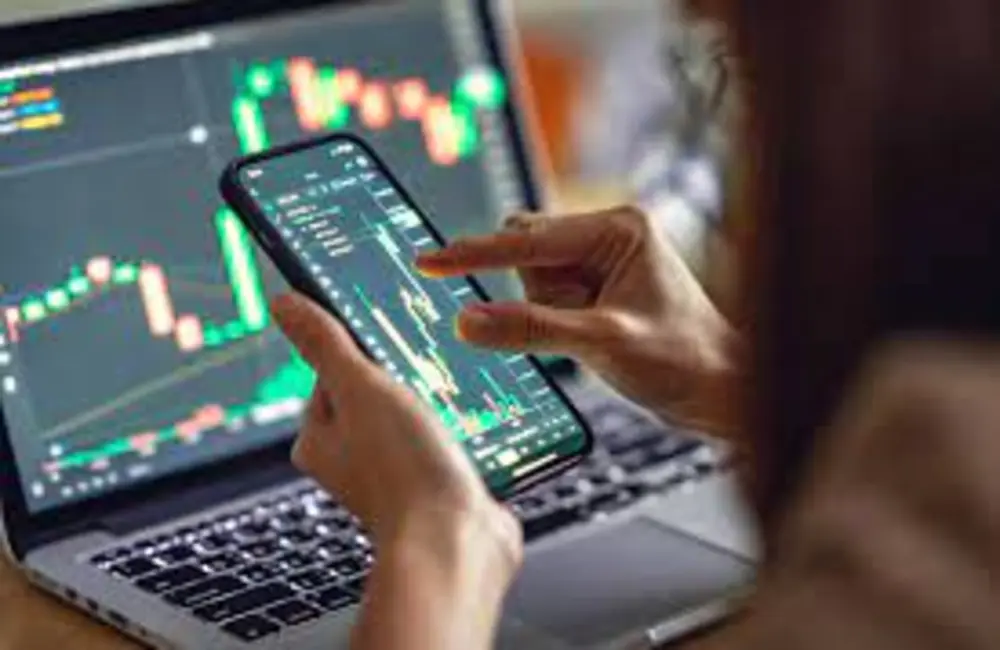The move higher offered a reprieve after another punishing stretch in the markets. The Nasdaq Composite, which fell more than the S&P 500 on Wednesday, notched its sixth straight trading day of declines. Yet, such understandings big upswings and plummeting downturns — can also be a signal of peril. Markets had been rattled by similar gyrations as they plunged in the early days of the pandemic.
ASX futures lifted 115 points or 1.73 per cent to 6750 at 7:00am on Friday AEDT, signalling a surge at the open.
U.S. stocks turned sharply higher Thursday, a head-spinning change of direction after major indexes spent much of the morning deep in the red.
The morning’s plunge came after a miserable stretch for stocks, but traders seemed to conclude that the selling had gone too far. Stocks shrunk their losses as the morning progressed, and turned green shortly after 11 a.m. The S&P 500 recently was up 2.6%, and the Dow industrials were up by roughly 2.8%, or about 827 points. The Nasdaq Composite added 2.2 percent.
“What you have in the market is the pressures of a lot of short-term traders,” said Tom Galvin, chief investment officer at wealth management firm City National Rochdale. Though some investors dumped stocks on the news of rising inflation, “once that selling was exhausted, that’s when I think markets started to stabilize.”
In the commodities markets, Brent crude oil rose 2.4 per cent to $US94.7 a barrel, gold slipped 0.5% to US$1,664.74.
On the Bond markets the Aussie 2Y yield moved lower to 3.28% while the 10Y rose to 4%. Abroad, the yield on 2 Year US Treasury notes increased to 4.46% and 10 Year US Treasury notes were 3.96%.
The Australian dollar rose to as high as 63 US cents up from a closing level of 62.76. The Wall Street Journal Dollar Index, which measures the U.S. currency against 16 others, slipped to 104.27.
Asia
Shares in China were mixed as a surge in the number of coronavirus cases in the country and the resultant lockdown measures weighed on sentiment. Coal miners and property developers lost ground as pharma companies gained. China Coal Energy dropped 7.6%, Yankuang Energy fell 4.9% and Poly Developments fell 2.5%. Shares in WuXi AppTec climbed 5.4% after the company forecast that its nine-month net profit would more than double from a year ago. Shares of peer Jiangsu Hengrui Medicine Co also rose 3.9%. The Shanghai Composite Index fell 0.3% to 3016.36, while the Shenzhen Composite Index added 0.2% and the ChiNext Price Index gained 0.3%.
Hong Kong’s Hang Seng Index lost 1.9% to 16389.11, marking a six-session losing streak and its lowest closing level in 11 years after declines in casino stocks and property developers. Covid-19 outbreaks in China fuel fears of further extended mobility restrictions. Sands China fell 7.5 percent, while Galaxy Entertainment was one hour percent lower. CIFI Holdings tumbled 10%, but said that media reports about its offshore debt might be inaccurate and that discussions with pertinent creditor groups were “constructive.” Its peers, Country Garden Holdings and Longfor Group, fell 9.8% and 6.4%, respectively. The pharmaceutical industry was a beacon of optimism. Shares of WuXi AppTec rose 3.0% after releasing better-than-expected earnings forecasts, and BeiGene surged 14% after the company said that its drug Brukinsa did better than a rival’s in a trial.
The Nikkei Stock Average closed down 0.6% at 26237.42, after worries about global economic prospects and geopolitical risk had weighed on the market early in the session. Aviation stocks were down, with ANA dropping 2.9% and JAL losing 2.8%. Toshiba jumped 7.4 percent after a report that a group led by Japan Industrial Partners was preparing to acquire the company for 2.8 trillion. The dollar last traded at 146.81 yen versus 146.89 yen late Wednesday in New York. The yield on the 10-year JGB fell half a basis point, to 0.245 percent.
Europe
European shares climbed, after figures showed that core US inflation was higher than expected and amid speculation that the UK government may make a U-turn on controversial tax cutting plans. The pan-European Stoxx Europe 600 added 0.9 percent, and the German DAX and the French CAC 40 both rose more than 1 percent.
“It appears the market is steadily discounting the possibility that the chances of a significant U-turn, or even multiple U-turns, are rising, and with it the UK fiscal position is improving, all the while the new prime minister and her chancellor look more and more like they are not in control of events,” wrote IG analyst Chris Beauchamp.
In London, the FTSE 100 finished 0.4% higher on Thursday at 6,850 points, recovering from earlier losses in the week. The index’s biggest risers were Ocado Group, International Consolidated Airlines Group and NatWest Group, ending up 11%, 8.0% and 7.7%.
North America
U.S. stocks sharply reversed higher on Thursday head-spinning reversal a day after major indexes had spent much of the morning deep in negative territory. Stocks slumped in early trading after fresh data confirmed that inflation is remaining stubbornly high, bolstering expectations that the Federal Reserve will stick to large interest-rate increases.
Traders seemed to decide that the selling had gone enough. Stocks cut their losses throughout the morning session, then went green shortly after 11 a.m. The S&P 500 was up 2.6% the last while the Dow industrials were also 2.8% higher, or around 827 points. The Nasdaq Composite rose 2.2 percent.
“The market is experiencing the forces of a lot of short-term traders,” Tom Galvin, chief investment officer at wealth management firm City National Rochdale, said. Although some traders sold off stocks after the inflation data, “once they were done selling, I think markets started to stabilize.”
The rebound was a welcome one after another brutal stretch in the markets. Yet such moves sharp jumps or steep declines can be a harbinger of trouble. Markets experienced similar gyrations when they tumbled in the early days of the pandemic.
Investors have been keeping an eye out for details on the direction of inflation and the direction of the Federal Reserve’s effort to contain the price increases by hiking interest rates. Higher rates press down on the valuations that investors are willing to pay for stocks, and they set off fears about the future profitability of companies.
Earlier on Thursday, fresh data from the Labor Department showed that a measure of US consumer inflation excluding volatile energy and food costs accelerated to a new four-decade high. The so-called core measure of the consumer-price index rose 6.6% in September from a year earlier, the largest gain since August 1982.
The consumer-price index, overall, rose 8.2% in September compared with a year earlier, slowing from 8.3% in August and 9.1% in June. That decline could be welcome news for investors seeking a rationale to buy back into a stock market that is trading much more cheaply than it has been of late.
“What you’re seeing is a little bit of peaking out in inflation to the point where maybe we just don’t have to fight the Fed so much, and people will be comfortable buying in in these levels,” said Dan Genter, the chief executive and chief investment officer at Genter Capital Management.
Investors have been arguing over whether spreading signs of stress in some markets could prompt the Fed to pump the brakes on the pace of interest-rate increases. Volatility in U.K. government-bond markets, amid government plans for big, debt-financed tax cuts, has triggered margin calls on pension funds, rippling into US junk-debt markets.
Mortgage rates surged to a 20-year high on Thursday, which is expected to increase pressure on the cooling housing market and perhaps hasten the shakeout of the cyclical industry.
At the same time, Federal Reserve officials expressed worry at their meeting last month about how long high inflation was likely to persist. They raised their projections for rate increases, though some cautioned against overdone increases given risks of economic and financial volatility. The International Monetary Fund has cautioned that a rush to raise interest rates among global central banks has risked adding even more to the vulnerabilities of financial systems.
“Market volatility and financial stability is something we’re monitoring very closely,” said Carsten Brzeski, global head of macro research at ING Groep, who added that the rapid increase in interest rates “is clearly a potential risk.”
In another report on Thursday, the Labor Department said 228,000 Americans filed new claims for unemployment benefits for the week ending Oct. 8, up from 219,000 the prior week.
























